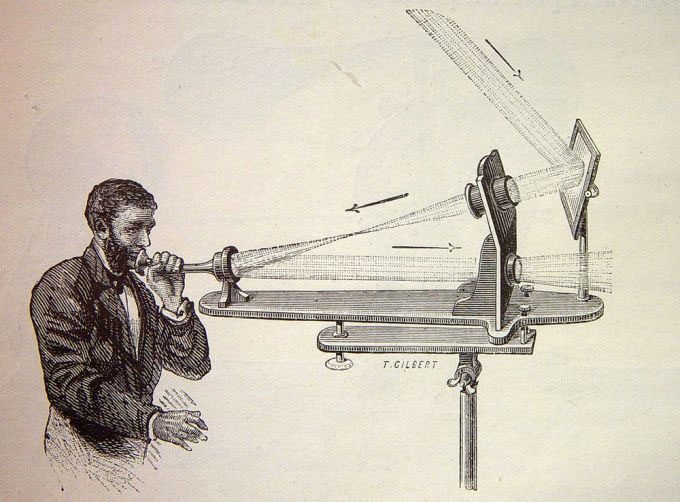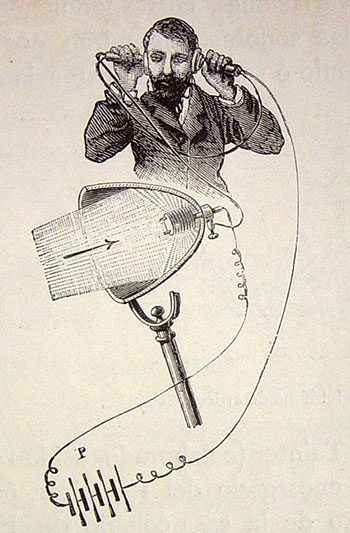Inventor Alexander Graham Bell had high hopes for the photophone, envisioning that wireless communication would replace the tangled web of telephone wires.
Today, the telephone is often regarded as the greatest invention of Alexander Graham Bell (1847 – 1922). However, Bell disagreed with this notion. He described the invention of the photophone—an apparatus that transmits sound using light—as his greatest achievement.

Illustration of the transmitter of the photophone. (Image: Amusing Planet).
In 1878, while on his honeymoon in Europe with his wife, Bell read a study by Robert Sabine published in the journal Nature, about the newly discovered properties of selenium, which showed that its resistance changed when exposed to light. In his experiments, Sabine used measuring instruments to observe the effects of light on a selenium bar connected in a circuit with a battery. “The slightest shadow or other variation in light intensity led to a significant change in the electromotive force of the two objects,” Sabine wrote.
Sabine believed that selenium could be used as one of the elements in a wet galvanic cell, but Bell found a more practical application. According to Bell, if he added a receiving telephone to the circuit, he would be able to hear things that Sabine could only see.
Bell enlisted Charles Sumner Tainter, an instrument maker, and together they created a functioning photophone in the laboratory by attaching a metal mesh to a diaphragm, with a beam of light interrupted by the movement of the mesh in response to speech. When the modulated light beam shone on the selenium receiver, Bell could clearly hear Tainter singing through his earphones.
On April 1, 1880, Bell and Tainter successfully communicated over a distance of approximately 79 meters. A few months later, on June 21, they continued to communicate clearly over a distance of 213 meters using sunlight as the light source. Tainter stood on the roof of Franklin School, conversing with Bell, who was in the laboratory. Bell then signaled Tainter by waving his hat from the window.

Illustration of the receiver of the photophone. (Image: Amusing Planet)
Bell hoped that his new photophone invention could be used on ships at sea. He also envisioned that wireless communication would replace the increasingly tangled web of telephone wires sprouting along the busy streets of cities.
“We will be able to talk by light at any visible distance without any connecting wires. In general science, the photophone will lead to discoveries that are unimaginable today,” Bell shared.
However, Bell could not protect the transmission from outdoor influences such as clouds, fog, rain, or snow—elements that could easily disrupt the light transmission process. Soon after, the wireless transmission capabilities of inventor Guglielmo Marconi began to surpass the maximum range of the photophone.
Today, light beams are the primary means of transmitting information globally, although not in the form Bell envisioned. Instead of transmitting wireless light signals, they are now transmitted across continents using optical fibers.


















































